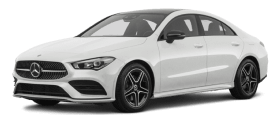To many of us who have been driving for years and even decades, pumping gas has become such an ingrained routine that we practically do it on auto pilot. Before you push the button to choose your grade, do you look at anything else besides current market price? You should. There are many other things to consider when filling up at the pump, whether you have an Audi or a Bentley.
Different Types of Fuel
Most passenger vehicles run on good ole gasoline. But there are vehicles out there that also run on diesel, E85 gasoline, hybrid gas/electric, natural gas and even hydrogen. You obviously know what kind of gas your European vehicle runs on, but in case you need a reminder or you’re driving with a friend, check the label on the fuel door or flip through the manufacturer manual.
It can’t be stressed enough how important it is to use the proper fuel. Putting gas in a diesel engine or diesel in a gasoline tank is a very costly mistake. Using high-content ethanol (E85) in an engine that has not been designed for such fuel may also void the manufacturer’s warranty, says AAA.
Regular vs. Premium
Gasoline grades are dependent on the fuel’s octane level. Higher octane levels will guard against engine pinging and knocking. Higher-compression engines and those with turbochargers generally take higher-octane fuel. Check the driver’s manual for the correct grade required for your brand of European vehicle. The manual may offer a suggestion of premium gas but this isn’t always required every time you hit the pump.
Most cars run just fine on the lower-grade gas, and it saves you money, but you may want to treat your high-end vehicle to a higher grade of gas to keep it running at peak condition.
Alternative Fuels
Yes, gasoline and diesel are the most common fuels, but pretty much any vehicle can be converted to utilize an alternative fuel source. For example, you could convert an old diesel engine to run on used vegetable oil. This is a very simple example. You could get more complex, such as make an expensive conversion of compressed natural gas to battery electric.
Selecting the Right Octane
The octane rating you see at the pump is the measure of a fuel’s ability to resist those knocks and pings during combustion we were talking about earlier. This is caused by the air/fuel mixture detonating prematurely within the engine.
Unleaded gasoline has octane ratings of the following: 87 (regular), 88–90 (midgrade), and 91–94 (premium). You should use the octane rating required for your vehicle by the manufacturer. Most can run on 87 octane, but others are designed to use higher octane fuel, such as Jaguar (runs best on 91).
Higher octane fuels are usually required or at least recommended for engines that utilize a higher compression ratio and/or rely on supercharging or turbocharging to force more air into the engine. In many engines, high octane fuel improves performance and fuel economy. If you decide to use a lower octane fuel, the engine may run poorly or damage the engine and emissions control system over time.
In addition, higher octane fuel can reduce carbon dioxide (CO2) emissions under extreme conditions, such as when towing something or carrying heavy loads, particularly in very warm temperatures.
You will pay more for higher octane fuel because the components within it that boost octane are more expensive to produce.
It seems filling your vehicle’s tank at the pump offers about as many options as selecting your morning coffee at the local corner shop. But knowing what each grade means and when you should use it is key.
Contact Hance’s European
If you have more questions about the type of fuel best for your luxury vehicle, or if you want to schedule service, contact Hance’s European at 214-761-3247.


 BMW
BMW Mercedes
Mercedes Jaguar
Jaguar Land Rover
Land Rover Volkswagen
Volkswagen Porsche
Porsche Audi
Audi